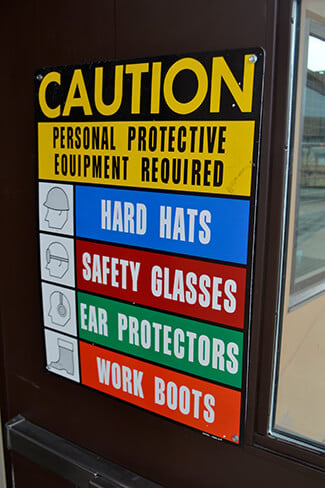Space, The Next Mining Frontier

Science fiction continues to stimulate the possibilities of life on the moon and beyond. That intrigue sparks an interest in investors such as Moon Express, the first private company in history to receive government permission to travel beyond Earth's orbit. It has more than $40 million in private equity financing to fund its maiden lunar mission that is tentatively set for 2020. The lunar surface reportedly holds hundreds of billions of dollars of pure resources such as water, helium, and rare earth minerals. Each Dec. 6 marks National Miners Day. The future of mining may not necessarily be in the earth but in the stars. The main risks and dangers of mining will always be present as well as the need for more rigid safety practices as technology and landscapes evolve.
Mining Beyond the Earth
Starting in spring 2018 at Colorado School of Mines' Center for Space Resources, a pilot course will begin for the first-ever academic program specializing in space mining. It is set to launch mining education into a new hemisphere. Companies such as Deep Space Industries and Planetary Resources are already planning space prospecting missions.
In 2016, Earth mining had its safest year ever, according to the National Mining Association. Mining industry leaders say they attribute technology, a united approach to safety, and corporate culture for strengthening safety programs. The future of the mining industry is exploring possibilities beyond Earth. A NASA craft is on its way to get a sample of an asteroid to bring it back to Earth, and there's the international and commercial talk of long-term living in space.

Mining still is one of the most dangerous jobs in America, and miners consistently put their lives at risk each day as they contend with health and safety issues. Though many old hazards have been engineered out with newer technology, such as sensory detection on machines for worker safety, a mine safety manager still needs to ensure proper rescue plans, protocols, and proper equipment usage are followed. Those in charge of safety operations also must routinely conduct numerous inspections of the mines and facilities, troubleshoot mechanical and electrical failures, and perform emergency repairs to mechanical, electrical, pumping, heating, and other equipment. It is important to make consistent updates to training and procedural information, as well as keep the site in clear and consistent communication using safety signs and labels.
Mine operators must be able to locate and communicate with mine workers at all times-particularly in the event of fires, roof falls, or other life-threatening situations. It is equally critical that communication systems stay active during power outages, fan stoppages, or gas accumulations. Proper labels on fire extinguishing devices and signs notifying of their location need to be in place for all workers to see. Labeling equipment, PPE, and safety/rescue supply boxes used to protect miners in the event of becoming trapped underground, assists in day-to-day operations.
When inspecting the belt drive in an underground mine, conduct weekly inspections of electrical and gas hazards, perform required weekly fire suppression checks, and make sure industrial-grade signs and labels have the correct information and pictograms on them. A manager should also ensure employees are using safe practices during jobs such as flame cutting and welding, with machine safety instructions in place, following tips from the Mine Safety and Health Administration. Respiratory protection signage can easily indicate where breathing apparatuses are stored. Check to make sure equipment such as draglines, power shovels, large trucks, bucket wheel excavators, and conveyors have the labels needed for safety. Employers may also use prismatic reflective tape to increase visibility, improve wayfinding, and communicate hazards in low-light situations.
Stay in Step with Safety
Our innovative solutions help keep opencast and underground mining management in step with the labels and signs they need for smooth operations. Enhance employee productivity, increase efficiency, and foster cooperation among mining employees with the complimentary Best Practice Guide to Continuous Improvement for the Mining Industry. Amplify visual communication on the job site with an industrial label and sign printer that can keep up with safety and compliance needs, such as the portable DuraLabel Toro label and sign printer. Whether you work in a wet, dirty, or oily environment, the tough Toro is ready to work anywhere you are with label supplies built to endure nearly any surface.
Related Resources

Mining Tech: Innovation and a Focus on Safety Improve Industry
Mining is changing mostly because of new tech and safety improvements, which are power driving profits and ...
Read
NIOSH Digs Into Electrical Safety in Mining
Why Is Electrical Arc Flash Safety Essential in Mining Operations? To help solve mining work safety and ...
Read
MSHA Increases Conveyor Safety Awareness
The Mine Safety and Health Administration is focusing on conveyor safety after a string of injuries and ...
Read.png)





